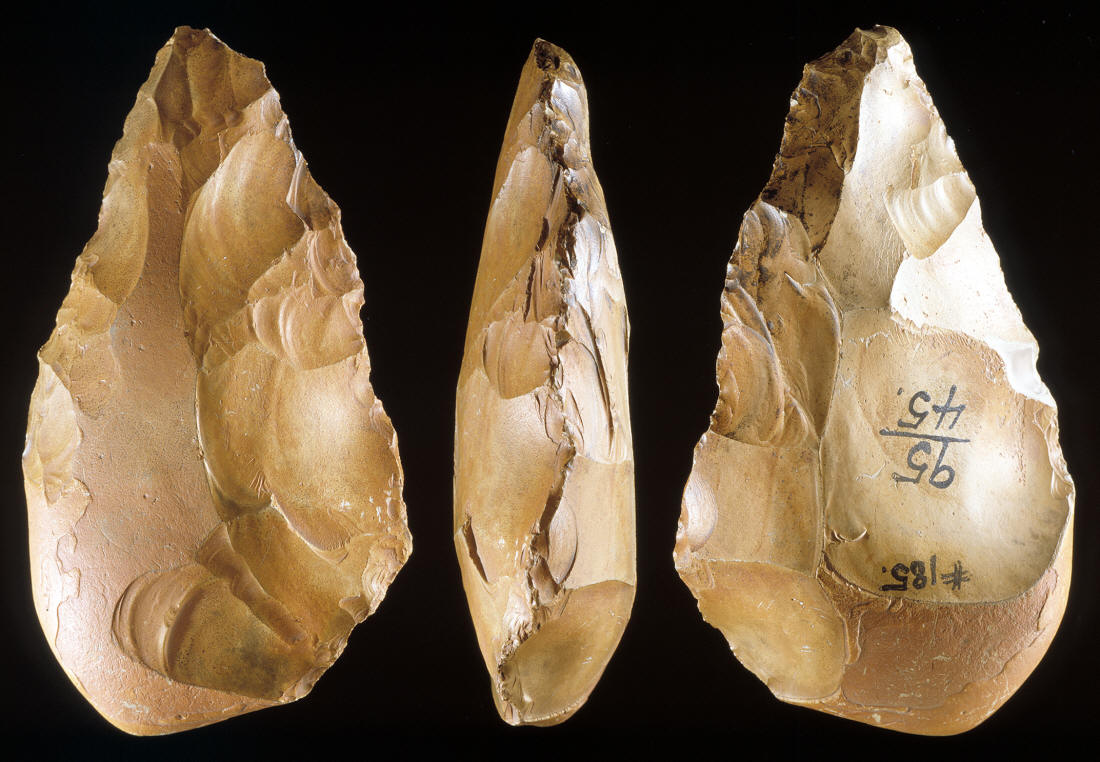|
HANDAXE
ACHEULEAN
THEBES, EGYPT
EST. 250,000
TO 90,000 YEARS AGO
AMERICAN MUSEUM OF NATURAL
HISTORY COLLECTION
RETURN TO PAGE 1
COPYRIGHT MAY 31, 2008 PETER A. BOSTROM
This
handaxe was collected on the surface near Thebes in southern Egypt
near the Nile River.
Jim G. Shaffer, PhD. describes this handaxe as: "A good
example of an "almond" shaped biface. Presence of cortex areas (the
dull granular surface) on the base and the short, broad and deep
flake removal scars (for example the area where the black numbers
are painted) in conjunction with the thick base suggest that this
example represents an early stage (Abbevillian/Chellean) of biface
technology. At the same time the presence of relatively long, narrow
and flat removal scars near the pointed end and occasionally along
the lateral edges suggest a soft-hammer was used to retouch or
sharpen the artifact after utilization. This soft-hammer technique
indicates that it is not representative of the very earliest stages
of biface technology. Numerous small, deep flake scars along the
lateral edges indicates extensive and heavy utilization of the tool.
The semi-polished appearance of the tool and the soft, rounded edges
of the flake scars probably reflect the abrasive actions of wind
blown desert sand."
This handaxe is made of a light reddish brown flint and it measures
6 15/16 inches (17.3 cm) long, 3 1/4 inches (9.5 cm) wide and 1
11/16 inches (4.2 cm) thick.

|